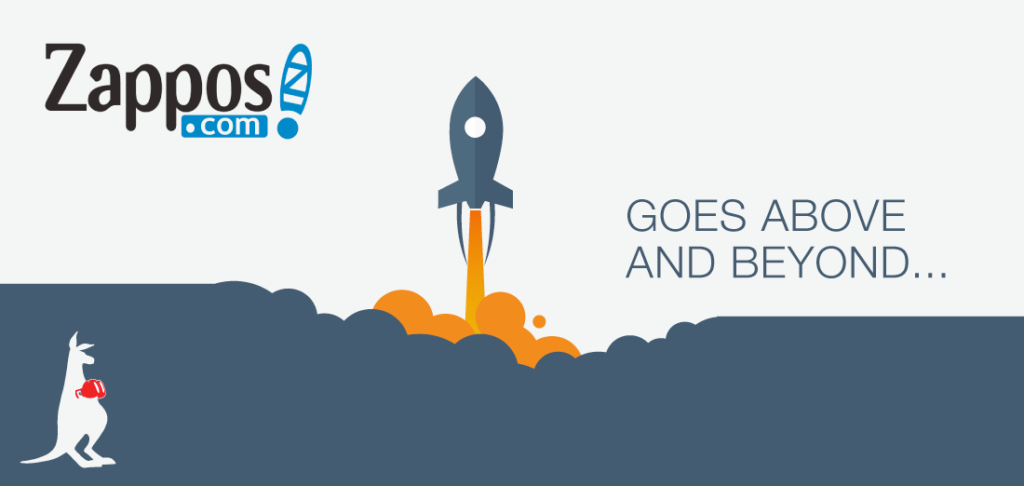Going Above and Beyond
Zappos is known as an online shoe and clothing store but its employees and CEO, Tony Hsieh, consider the company so much more than just an online retailer. They are a customer-experience company and the brand reflects that.
At a Net Promoter conference in 2009 (see the video below), Hsieh talked about how Zappos focuses its energy on return customers and that a lot of the money that would have been spent on marketing goes back to the customer, much of it in the form of shipping costs. Maybe it doesn’t make sense up-front, but humor us; we’ll get there.
Per the Zappos model, they encourage customers to order as many pairs of shoes as they want. Maybe a customer can’t decide between the size 8 in red or size 8 in blue. Maybe they want the blue, but don’t know if size 8 or size 9 will fit. Order them both! Order all of them! Plus nine more pairs to try on with all your other outfits. Then you can just send back the ones you don’t like—shipping is on Zappos.
(Zappos customer service reps are so good, they may even help you get a pizza delivered to your hotel room.)
In his talk, Hsieh says, “Our whole business strategy is this: Rather than spend a lot of money on marketing, we take most of the money that would have gone towards paid advertising and put it back into the customer experience. Then we let the repeat customers drive our business and generate business via word-of-mouth.”

Zappos doesn’t rely on advertising for growth. They largely rely on word-of-mouth to expand their business and it’s working. After launching in 1999, Zappos hit its $1 billion revenue mark in 2008, two years earlier than expected. Six years later the company is still killing it with fulfillment centers across the country and increased revenues.
The company’s commitment to customer service goes even deeper. Hsieh says while a lot of companies are trying to decrease time spent interacting with customers, they are opening up the lines across all channels of communication.
“We actually want to talk to our customers. . . We really don’t think that customer service is an expense that you should try and minimize; it’s an investment in your brand . . . As low-tech as it sounds, the telephone is one of the best branding devices out there.”
He goes on to say “A lot of people may think it’s strange that an Internet company is so focused on the telephone, when only about 5 percent of our sales happen through the telephone. In fact, most of our phone calls don’t even result in sales. But what we’ve found is that on average, every customer contacts us at least once sometime during his or her lifetime, and we just need to make sure that that we use that opportunity to create a lasting memory.”
Their support line is at the top of every page and they get 5,000 calls and 1,200 emails everyday. The customer service reps have no scripts or call limits; in fact, their longest call on record lasted 10 hours and 29 minutes. Their social media accounts are also monitored for customer inquiries and complaints.
Zappos garners an 83% Net Promoter Score (NPS) from emailed surveys and a 93% NPS from surveys after talking to a representative.
They’ve also taken extra measures by keeping close inventory of their products. They understand how frustrating it can be when a company says they are out of something, even after the customer has ordered and paid for it.

Still, Zappos will run out of product. In such an event, their wonderfully trained service reps are expected to divert the customer to three other websites that may have the shoes for them. “Yes, we’ll lose that sale, but we’re not trying to maximize every single transaction,” says Hsieh. “We’re trying to build a lifelong relationship with the customer.”
Like we always preach, brand is all about focusing on customer service and providing exceptional customer experience.
If you haven’t already, listen to Hsieh’s 9 minute speech at the Net Promoter conference here and/or read the excerpt from his book, Delivering Happiness: A Path to Passion, Profits, and Purpose here.


